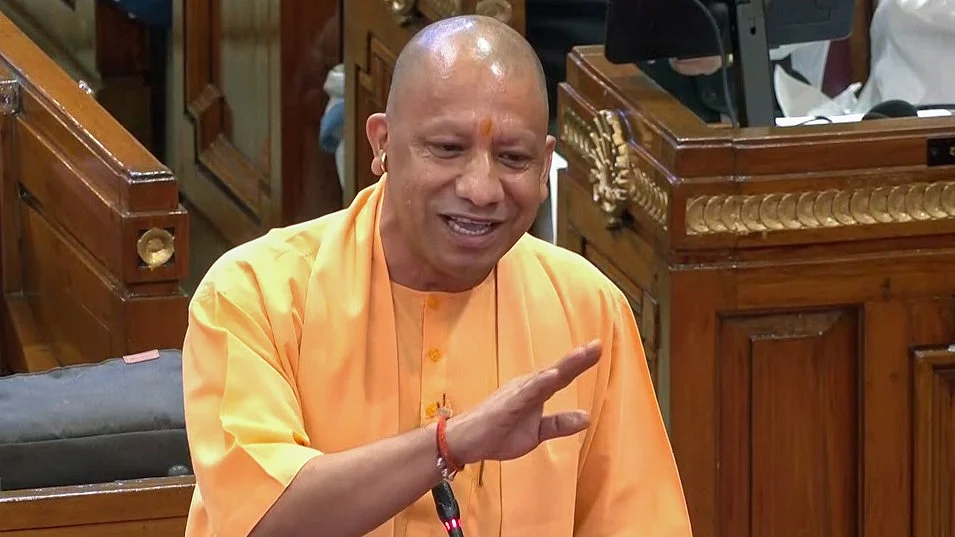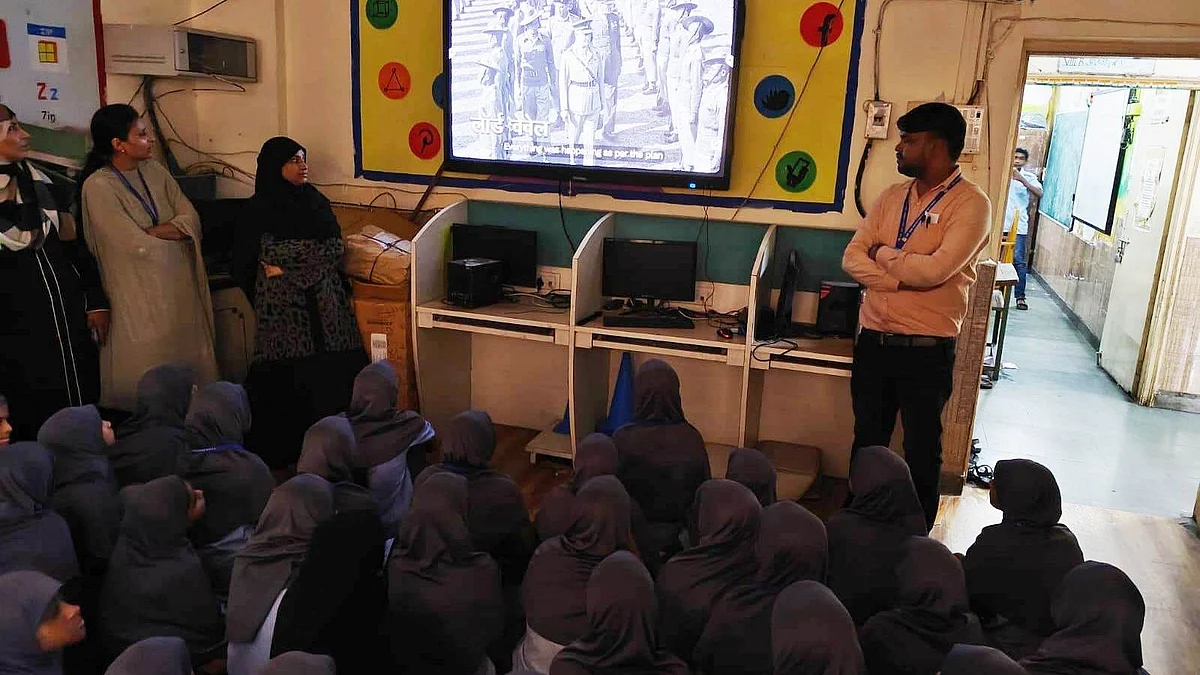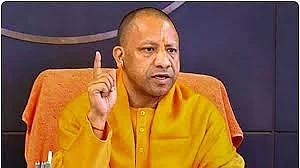Lucknow: Chief Minister Yogi Adityanath said that to advance the Prime Minister’s vision of a ‘Viksit Bharat’, the discussion on ‘Viksit Bharat – Viksit Uttar Pradesh’ was held in the Upper House of the UP Legislature for 26 hours, initiated by the Leader of the House and Deputy Chief Minister Keshav Prasad Maurya.
Overcoming constant disruptions and obstacles in the House, members carried this discussion forward for 26 hours on development, the future, and the state’s excellent vision. The CM expressed thanks to the chairman, all members of the House, and to the vision of a Viksit Uttar Pradesh within a Viksit Bharat. He said that after 2017, along with infrastructure, a meaningful change in the government’s mindset and approach has been seen in UP.
The CM said that when looking at the situation in Uttar Pradesh, two things are clear: what the possibilities were before 2017, and what has happened since then. Besides, in the next 22 years, what action plan will be needed to achieve the resolutions of a developed India, which will help achieve the targets.
UP had potential earlier as well. Despite this, UP’s role at different times is no secret. From 1947 to the 1960s, UP’s contribution to the country’s economy was more than 14 percent. By 2017, this had declined to just 8 percent. The CM discussed the results of the NDA government’s efforts between 1947 and 2017 and from 2017 to 2025, and also the comprehensive action plan for 2025 to 2047.
The CM said that during the GIS event in Lucknow, the Prime Minister had said that UP had immense potential. UP has become the land of expectations. If India is a bright spot for the world, UP is providing crucial leadership to drive India’s growth. In the ‘Amrit Kaal,’ the PM, as India’s charioteer, has given Vision 2047 for the country. To discuss UP’s role in a developed India, it is necessary to understand these issues and work accordingly.
The CM said that despite vast potential, due to policy apathy, UP kept falling behind before 2017. It came to be counted as a BIMARU state. Plans were made, announcements happened but there was neither willpower, nor transparency, nor commitment for the implementation.
Because of the government’s indifference, even basic facilities like electricity, roads, water, and healthcare were not available. There were no jobs for the youth, no relief for farmers, and investors did not trust the state. Crime and lawlessness prevailed. There was the pain of migration. Referring to encephalitis, the CM spoke about children’s deaths and the grief of their families. He also attacked corruption and nepotism in government jobs.
The CM presented before the House the transformation that took place in the state after 2017. He said that now there is the rule of law, a zero-tolerance policy for crime and criminals, a safe environment for industries, and UP has emerged as a dream destination for investors.
There is excellent connectivity by water, land, and air, and a strong network of expressways and metros. Government assistance is reaching farmers’ accounts directly. Youth are now skilled have jobs, and government employment. Without discrimination or appeasement, the double-engine government is implementing beneficiary-oriented schemes.

The mantra given by the Prime Minister of ‘Sabka Saath, Sabka Vikas, Sabka Vishwas, Sabka Prayas’ has played a decisive role in changing the state’s direction and condition. Now, UP is identified by good governance, better law and order, peace, and stability. Along with infrastructure, a meaningful change in the government’s mindset and approach has been seen in UP.
CM Yogi said that in 1947, India’s share in global GDP was just 2 percent, but at that time, India was the sixth largest economy in the world. In 1960, due to wrong policies of the Congress government, India fell to the 10th position. From 1980 to 2014, India slipped to the 11th position. In 2014, when Narendra Modi become the PM, India’s fortunes rose. In the last 11 years, India has set new benchmarks in economic growth, the result being that India is now established as the fourth largest economy.
The CM said that in the 1990s, industrial units were shutting down, investors were discouraged, and despite being a historic and mythological region, there was an atmosphere of despair in UP.
Despite fertile land, rivers, and labour force, the economic pace was very slow. From independence to 2016–17, UP’s contribution to national GDP kept declining. In 2017, UP’s contribution was in a very pitiable state. UP’s budget had become more dependent on central taxes and aid. In NITI Aayog’s Physical Health Index, UP was considered a backward state.
The CM said that between 2017 and 2025, UP has made a big leap in GSDP. In 2016–17, UP’s GSDP was Rs 13 lakh crore, which by the end of this financial year will increase to Rs 35 lakh crore.
UP’s share in GDP, which had fallen to just 8 percent, will rise to 9.5 percent by the end of this financial year. In 2016–17, per capita income was Rs 43,000, which will rise to Rs 1.20 lakh by the end of this financial year. The national per capita income is Rs 2 lakh; we have covered more than half the distance. UP’s exports have increased from Rs 84,000 crore to Rs 1.86 lakh crore. UP’s dependence on central taxes has now decreased. UP has succeeded in increasing its own revenue. As a revenue surplus state, UP holds a leading position among fast-growing states.
CM Yogi said that in agriculture and allied sectors, the story is about transforming UP from a grain provider to a food power. From 1947 to 2017, farmers’ productivity growth was limited, meaning costs were higher. National contributions in wheat, rice, and pulses were limited. The pace of expanding irrigation projects was slow. There was a lack of planned investment in livestock, dairy, and fisheries.
Agro-based industries were running at limited capacity, but after 2017, the state government’s efforts have resulted in UP’s agricultural growth rate being 14 percent, 4.5 percent higher than the national average. The CM said UP contributes 10 percent of the country’s cultivable land, of which more than 86 percent is irrigated. Because of this, UP’s potential has increased. UP produces 21 percent of the country’s food grains. In wheat production, UP ranks first in the country. The state has greatly increased production capacity in pulses and oilseeds.
The CM said that there was a time when sugar mills in UP were shutting down, but now UP alone produces 55 percent of the country’s sugar. From 2017 till now, Rs 2.86 lakh crore of sugarcane payments have been made. Today, 120 sugar mills are operational, 105 of which make sugarcane payments within a week. For the remaining 15, the government has ensured timely payment pressure. Three new sugar mills have been established. Six units have been re-opened and 38 have seen production expansion. Other than the sugar mills, 1.25 lakh new jobs have been created. In 2017, UP produced 42 crore litres of ethanol and in 2024–25, this has increased to 177 crore litres, making UP number one in the country.
In potato production, UP's contribution is more than 40 percent. In banana and vegetable production, UP’s share is 19 percent each; in other industrial crops, UP’s contribution is more than 16 percent. In agricultural diversification, in fruit and vegetable production, UP ranks number one.
The CM said that to increase farmers’ income, an Export Promotion Board has also been formed in UP. Referring to food grain procurement, the CM said that in the last 7–8 years, Rs 88,951 crore 11 lakh has been paid to farmers for paddy through DBT. In wheat procurement over 8 years, Rs 45,935 crore 40 lakh has been credited to farmers’ accounts. For millet procurement between 2022–23 and 2024–25, Rs 458 crore 47 lakh has been paid to farmers.
The CM said that under PM Kisan Samman Nidhi, Rs 90,000 crore has been credited to the accounts of 2.86 crore farmers. Under PM Kusum Yojana, one lakh solar panels have been given to farmers. Since 2017, 31 irrigation projects have been completed, providing additional irrigation facilities to 23 lakh hectares of land. In Lucknow, the UP government has advanced work on building the state’s first ultra-modern seed park named after former Prime Minister and Bharat Ratna Chaudhary Charan Singh on 1,000 acres. For the first time in UP, more than 15 lakh private tube wells have been provided free electricity connections.









